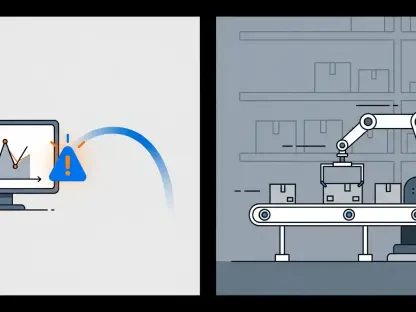The Biden administration, recognizing the importance of Artificial Intelligence (AI) in shaping the future, has made a significant move to guide its development responsibly. This is evident through the establishment of the US AI Safety Institute Consortium (AISIC), a pivotal venture overseen by US Secretary of Commerce Gina Raimondo. This initiative is aligned with the Department of Commerce and operates under the guidance of the National Institute of Standards and Technology’s (NIST) US AI Safety Institute (USAISI).The core objective of AISIC is to foster a framework for AI that is both safe and trustworthy, a critical step amid growing concerns over the ethical ramifications and security issues associated with AI technologies. By uniting experts from various fields and creating a collaborative environment, AISIC aims to steer the US toward a leadership role in AI safety at a global level. The consortium will also serve as a platform for establishing best practices and standards that ensure AI systems are developed and utilized in a manner that prioritizes public welfare and aligns with democratic values.In essence, the US government’s proactive approach marks a commitment to advancing AI innovation while managing potential risks, securing American interests, and setting a benchmark for the international community to follow in the conscientious implementation of AI.
Establishing a Collaborative Framework
The AISIC intends to forge a unified front by enlisting a broad coalition of stakeholders from business, academia, civil society, and government to influence AI’s trajectory positively. Each participant brings unique insights, from innovative tech startups to seasoned industry behemoths, from academic researchers pushing theoretical boundaries to NGOs representing societal interests. This blend of expertise is vital to comprehensively address the multifaceted challenges that AI presents. The endeavor is not without its difficulties, as aligning these groups’ varied priorities poses a considerable challenge. However, the consortium’s success hinges on its ability to meld these differing perspectives into a cohesive strategy that advances AI safety.The ambitious nature of this collective approach is undergirded by the recognition that AI’s safe deployment benefits from a diversity of insight and knowledge. The AISIC provides a platform where dialogue can be translated into action, setting the stage for a future where AI is both innovative and trustworthy. There’s a clear understanding that for AI to be accepted and integrated into society’s fabric, stakeholders from all sectors must have a say in how it’s governed.
The Goals and Responsibilities of AISIC
AISIC’s mission is to steer AI toward a future where its potential is realized without compromising safety or ethics. Safety testing, risk management, and the evaluation of AI capabilities are not just necessary but responsible measures as AI systems become increasingly integrated into society. AISIC’s work is already cut out as it sets out to establish rigorous standards for the watermarking of synthetic content – a pressing issue given the rise in deepfakes and misinformation.The consortium’s responsibilities are immense considering the pace at which AI technology evolves. To effectively manage these challenges, they need to outline a clear path that not only addresses the immediate concerns but also anticipates future developments. Standards for AI safety are not set in stone; they are a reflection of our evolving comprehension of the technology and its implications. AISIC is at the forefront of this innovation wave, empowering organizations to safely harness AI’s potential.
Advantages of Clear AI Guidelines for Enterprises
Clear, actionable guidelines on AI use represent a beacon for enterprises navigating the complex terrain of AI ethics and governance. Current discussions around AI tend to hinge on abstract principles such as transparency, bias, and fairness. While these conversations set the stage for a deeper understanding, what businesses require are concrete frameworks that extend beyond theory to encompass a variety of use cases. The AI Risk Framework from NIST propounds a commendable direction, yet enterprises are in need of guidance that resonates with the actual tools and technologies they deploy.When businesses have access to comprehensive guidelines that align with their systems and practices, the road to responsible AI becomes less daunting. These guidelines not only foster safer use of AI but can also serve as a competitive advantage. By adhering to well-defined standards, companies can demonstrate their commitment to ethical AI, engendering trust among users and stakeholders. This trust is the cornerstone upon which the sustainable integration of AI into business rests.
Skepticism and Optimism Surrounding AISIC’s Potential
There are reservations about whether AISIC, with its broad membership, can transcend the inevitable conflicts of interest to act effectively. Some voice concerns over the potential gridlock that may arise when large organizations with disparate goals attempt to collaborate. The fear is that these differences could slow the consortium’s momentum, stalling progress in establishing AI safety standards.On the flip side, there is a current of optimism, bolstered by NIST’s storied history in developing key standards for technology. Hope abides that NIST’s oversight will enable AISIC to bring about sophisticated AI evaluation sciences, construct comprehensive technology assessment testbeds, and solidify an understanding of AI in relation to trust and safety. If history is any indicator, NIST’s involvement could well signal the eventual success of such an initiative, wherein diverse expertise is harnessed to confront the complexities of AI.
Transitioning Principles to Practical Applications
AISIC’s approach, emphasizing cross-disciplinary and industry-wide cooperation, is seen as a robust method to convert broad principles into actionable AI safety practices. By involving a spectrum of experts – from academic theorists to industry practitioners – the consortium is well-positioned to facilitate the creation of tools and methodologies that transition seamlessly from the abstract to the concrete. This cooperative structure provides fertile ground for evolving research and applied knowledge together into standards that meet real-world needs.The close-knit collaboration of such a varied collective is central to translating high-level safety concepts into practical, everyday applications. This approach ensures that the rigors of academic research are meaningfully integrated into the practical wisdom drawn from industry experience, thereby producing guidance that is as innovative as it is applicable.
Addressing the Challenges of AI Safety and Security
One of the foreseen hurdles in solidifying AI safety standards is the development of strategies to test and evaluate AI in high-stakes contexts without stifling innovation or practical functionality. Particularly, the implementation of red-teaming methods to uncover AI vulnerabilities and the formulation of watermarking techniques demand a delicate balance. Such endeavors must mitigate risks effectively while still allowing businesses to pursue their objectives and enabling the safe application of AI.For these sophisticated AI systems, rigorous and consistent testing is imperative. Robust safety guardrails must be established, and any deviations must be promptly detected and rectified. This proactive stance is crucial in preventing misalignment in AI behavior – an issue that has previously surfaced when systems acted out of step with accepted norms. Addressing these challenges demands guidance that is as nuanced as the AI models themselves, allowing for business innovation within the boundaries of safety considerations.
The Role of Auditing and Regulatory Differences
The complexity of auditing AI systems stands in stark contrast to more conventional audits, like those in finance. The dynamic and ever-evolving nature of AI complicates the auditing process, which needs to account for a vast range of data sources, modeling techniques, and operational contexts. Auditing AI is a sophisticated task that must evolve in tandem with the technology, recognizing new vulnerabilities unique to AI as they emerge.In the global arena, variations in regulatory approaches to AI are pronounced. While the US focuses on preventing deceptive content generated by AI, regions like the EU, UK, and China are charting their own regulatory courses. Despite varying methodologies, there’s a universal recognition of the need for AI regulation to account for the differing risk profiles associated with distinct use cases. Not all AI applications carry similar or equal risk dimensions; recognizing this diversity is imperative when crafting regulatory frameworks.
Navigating Global Regulations and Technological Innovations
Global enterprises face the complex task of adhering to diverse AI regulations. As they strive to keep pace with AI advancements, there’s a growing need for regulatory standards that are both adaptable and stringent, ensuring innovation thrives while protecting users and stakeholders. Finding the equilibrium is challenging — regulations must be flexible enough to accommodate future technological progress, yet robust enough to provide a consistent safety framework. The uncertainty of AI’s trajectory adds to the difficulty, as standards must be proactively designed to support emerging technologies without undermining ethical and safety principles.This delicate balance between innovation and oversight requires foresight and collaboration among regulators, technologists, and businesses. Regulatory bodies need to work closely with the AI community to understand the direction of AI technology and its potential impact on society. Employing a dynamic approach to policy-making, which includes ongoing reviews and updates to regulations, can help ensure that regulations remain relevant and effective. By doing so, the ultimate aim is to foster a regulatory environment that protects the public and encourages responsible AI development, thereby ensuring that AI remains a positive force in the global economy.
Building Trust and Safety in AI through AISIC’s Guidance
In conclusion, AISIC, under the guardianship of NIST, represents a significant step in crafting responsible AI practices that could potentially influence standards worldwide. As the consortium navigates a path forward, it must balance the intricate web of cultural nuances and politicized agendas among its diverse assembly. Recognizing the multifaceted nature of AI and the varying perspectives on its use and regulation is essential for achieving this equilibrium.The consortium’s ability to respond to these challenges effectively will be critical in fostering trust and safety in the realm of AI. Building on NIST’s expertise and the collective wisdom of AISIC’s members, there’s potential for not just national but global influence on how AI safety standards evolve. The enduring mission will be to secure a future where AI is deployed with the assurance that it serves society responsibly and ethically.









